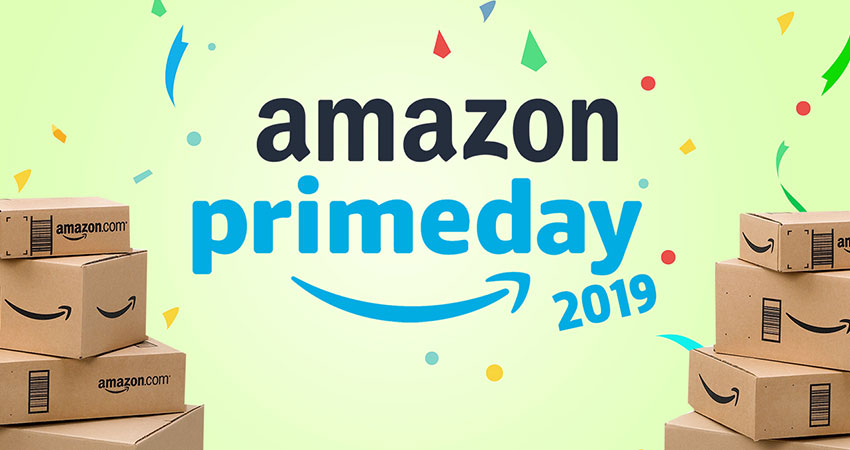Prime Day 2019, which kicks off for 48 hours on Monday, is expected to generate $5.8 billion in sales globally, with an estimated 250 retailers drafting in its wake as more of them realize the huge potential, according to data analysis from Coresight Research and Adobe Analytics, respectively.
At the same time, Consumer Intelligence Research Partners is estimating that Prime membership in the U.S. hit 105 million in June, up 11% from 95 million a year ago, with 57% of Amazon shoppers being members. The growth rate has been slowing over the past couple years, according to CIRP.
The Coresight estimate of $5.8 billion – about 1.4% of the $277 billion Amazon took in last year – excludes revenue from additional Prime membership signups during Prime Day. Coresight is predicting 62% of Prime Day revenue will come from the U.S. Prime Day will run in 18 countries this year, with the United Arab Emirates being a new addition.
Third-party sellers have surpassed the 50% mark in terms of revenue, representing 53% of sales on Amazon’s marketplace, according to Statista. Amazon represented a whopping 49.1% of U.S. retail sales in 2018, per eMarketer.
Adobe predicts revenue lift for top retailers will be 79% during Prime Day this year, up from 54% in 2018. Seventy percent of the lift in 2018 was directly tied to conversion, according to Adobe, while 25% came from an increase in visits, and the remaining 5% from an increase in basket size.
Prime Day this year will also be the third day ever outside of the holiday season to surpass $2 billion in ecommerce sales, after Labor Day 2018 and Memorial Day 2019, according to Adobe.
“We attribute this growth in sales to the fact that the big ecommerce competitors have become better at reaping the benefits of this artificial holiday,” said Taylor Schreiner, principal analyst at Adobe Digital Insights. “After all, they’ve now had almost five years of practice in converting Prime Day traffic.”
The hottest Prime Day categories will be electronics, home goods and apparel, according to Adobe, with the latter two on par with Cyber Monday discounts and apparel outpacing many holiday discounts.
According to a survey from supply chain platform provider Bamboo Rose, 44% of shoppers will do price comparison on Prime Day to ensure they’re getting the best deal before purchasing. Also, 48% of previous Prime Day shoppers plan to purchase again in 2019, and 18% of those surveyed to do so for the first time.
Among the major competitors offering their own “me too” sales events are Walmart, which started its Google Week on July 8, running through July 16. Deals include the Google Home mini for half off at $25, as well as discounts on smart speakers, security cameras and doorbells.
Over at Target, its Deal Days will coincide with Prime Day, with discounts on “rarely-on-sale” home, apparel and recreation products, with the usual same-day delivery and pickup options and 5% off for REDcard members. There are also early access deals such as 50% off small appliances, cutlery and other kitchenware.
eBay cleverly titled “Crash Sale” – a knock at Amazon’s website problems last year on Prime Day – began July 1 and runs through July 15. It includes deals on several categories including electronics, home goods, apparel and sporting goods.
Best Buy is planning to again run its “Big Deal Days” to coincide with Prime Day, although details have yet to be announced.
Not all is happy land for Prime Day, however. Many groups continue to complain about working conditions and high associate performance expectations at Amazon fulfillment centers, and workers at a Minnesota facility are planning a work stoppage Monday.
Stuart Appelbaum, president of the Retail, Wholesale and Department Store Union (RWDSU), noted how this year’s Prime Day has been expanded to two days, while Amazon recently cut its Prime delivery promise in half, from two-day to one-day shipping. Amazon workers are not unionized in the U.S., but are largely represented by unions in Europe.
“Amazon fulfillment workers were already facing speeds of 200-300 orders per hour in 12-hour shifts before the new policy,” Applebaum said in a statement. “They were struggling to maintain that pace, even before the one-day shipping policy was announced. Testing hundreds of thousands of workers physical limits as though they were trained triathletes is the wrong approach.”
Amazon spokesperson Ashley Robinson countered that the company’s employees “work in a positive, safe environment” based on decades of process improvement and innovation.
“Mr. Appelbaum continues to spout falsehoods and display his overall lack of knowledge as to how Amazon operates,” Robinson said. “We appreciate his concern for our associates but his concern is misguided and self-serving as we already offer what he’s calling for. Employees are the heart and soul of our operations, and we’re proud of our team around the U.S. who are paid at least $15 an hour with great benefits from day one.”

